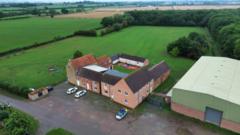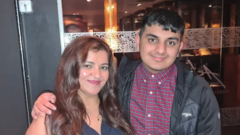
Feeling the drumbeat in your core. The sweet smell of the smoke machine. Closing your eyes and belting out the lyrics.
When it comes to nights out, there’s very little that can beat catching a bit of live music. A decent gig can brighten your week; a great gig can change your life.
It might be a cramped performance in a room above a pub, where it feels like you could reach out and strum the guitar yourself. It could be a stadium show, where you’re surrounded by thousands of people jumping in unison.
Londoners are lucky enough to have easy access to both those options – and everything in between.
Some performers, like pop superstar Dua Lipa and heavy metal legends Iron Maiden, have climbed every rung on the ladder and are now selling out some of the biggest venues in the country.
But they would not have made it to that level if they had not taken the initial step, and walked out in front of a tiny audience at one of London’s grassroots music spots.
For singer-songwriter and activist Billy Bragg, it all started in the early eighties with weekly gigs at Greenwich’s Tunnel Club, where the air smelt of sawdust and a couple of hundred punters could fit in at a push.
He told Metro: ‘I had a Tuesday night residency there for about three months, and I kind of learned how to to stand in front of a crowd and get their attention, because I was opening for whoever played, just me solo.
‘I dealt with all sorts of audiences playing. It really was an apprenticeship to connect with an audience, absolutely crucial in the way I do gigs now.’
Bruce Dickinson, Iron Maiden’s lead singer, said his band and thousands of others had ‘taken on the world after starting their journey in London’s clubs and venues’.
‘London’s diverse music scene and its grassroots venues are essential to nurture and support new artists, to bring music fans together and create lifelong passions and memories,’ he said.
‘We need to cherish it, celebrate it and protect it.’
Latest London news
To get the latest news from the capital visit Metro's London news hub.
To do all three, Metro has joined forces with the Mayor of London, Transport for London and organisations including the Music Venue Trust, Featured Artist Coalition, Outernet and Universal Music for a new campaign.
At its heart is a reimagined London Underground map, which puts a spotlight on the artists and locations that define culture in the capital.
Each Tube line reflects a different element of that heritage: the Piccadilly line features contemporary artists; the Northern has music legends; the Jubilee features albums and the Bakerloo contains much-loved songs about the city.
The new Tube Map celebrating London’s grassroots venues – CLICK TO ENLARGEThe artwork celebrates the venues that have made this happen – and aims to encourage Londoners to take advantage of the musical opportunities on their doorstep.
According to the Music Venue Trust (MVT), the 179 grassroots music venues in London hosted almost 330,000 performances last year which were attended by around 4.3 million people.
Talent from that scene will feature in the music programme for the first ever SXSW London, which is taking place next month.
The event’s head of music Adem Holness said these venues ‘often feel like our best-kept secret’.
‘As a Londoner, I’m super proud to see the iconic status of grassroots music culture celebrated as a reminder that some of London’s best bits come to life after dark,’ he added.
Skin, the frontwoman of Skunk Anansie, told Metro it was the small gigs where ‘people are a lot less precious’ that allowed her rock band to ‘get good’.
The capital’s grassroots scene was described by Sir Sadiq Khan, the Mayor of London, as ‘renowned around the world’.
He said: ‘This special edition Tube map is a great way to highlight what a huge impact the scene has on our capital, as we continue to do all we can to support venues and build a more prosperous London for everyone.’
But the Mayor added that many of these sites have ‘faced huge challenges in recent years’, a concern shared by Mark Davyd, the founder of the MVT.
Mark said lots of venues are facing the painful reality of a ‘dual personality’: ‘We’re selling more tickets to see live music in the UK than we’ve ever done before. Certainly, we’re selling significantly more in London we ever have done before.
‘The challenge of running one of these venues, though, is that the costs in the last five years have absolutely exploded.’
Between staffing, energy bills, business rates and rent, a critical situation has developed where ‘most of them are really struggling to survive in a climate in which live music has never been so highly valued’, he said.

Celebrating the history and impact of these beloved spaces will help ‘secure London’s future as a world-leading music capital’, according to Metro editor Deborah Arthurs.
She said: ‘At Metro, we believe in the power of culture to bring people together and tell the stories of a city—and nowhere is that more alive than in its independent venues and emerging artists.
‘Grassroots music isn’t just where great talent gets its start—it’s where community, creativity, and identity thrive. These spaces keep live music accessible and affordable for audiences.
‘Supporting them means everyone has the chance to experience the energy, connection and inspiration that only live music can offer.’
Get in touch with our news team by emailing us at [email protected].
For more stories like this, check our news page.








.jpg.webp?itok=1zl_MpKg)





 Bengali (Bangladesh) ·
Bengali (Bangladesh) ·  English (United States) ·
English (United States) ·